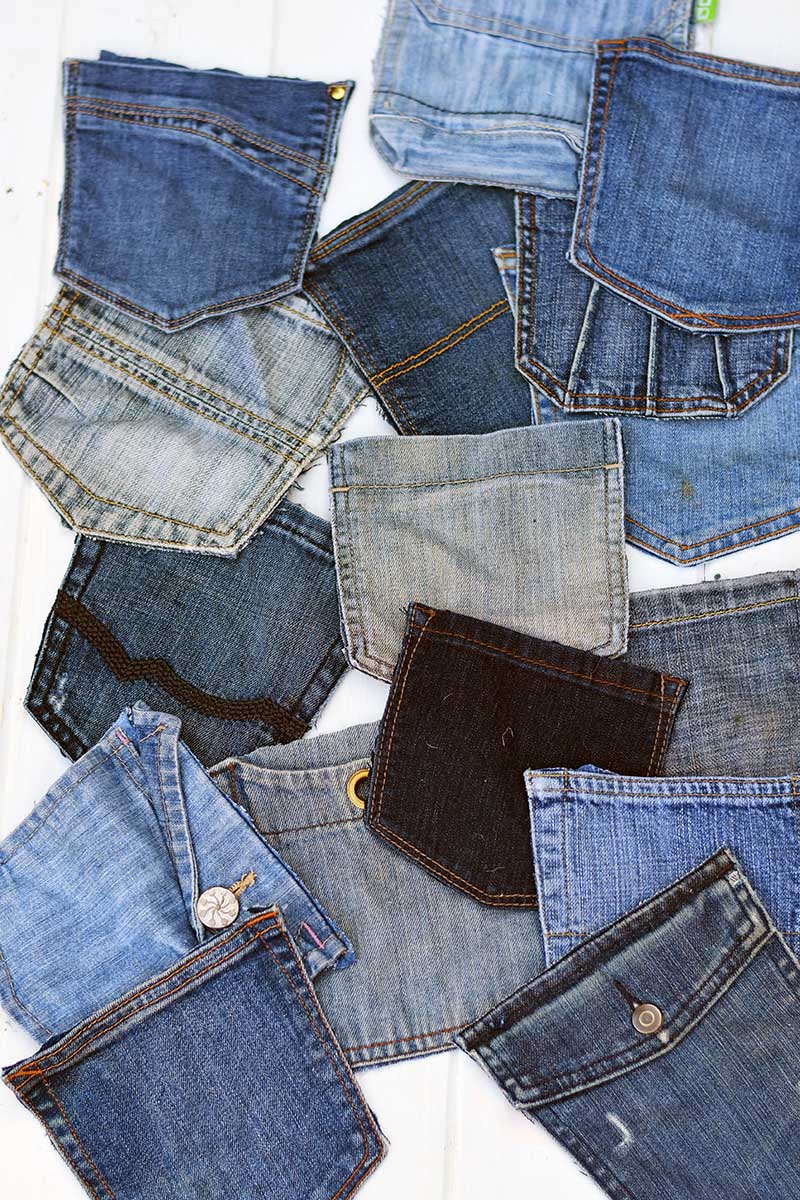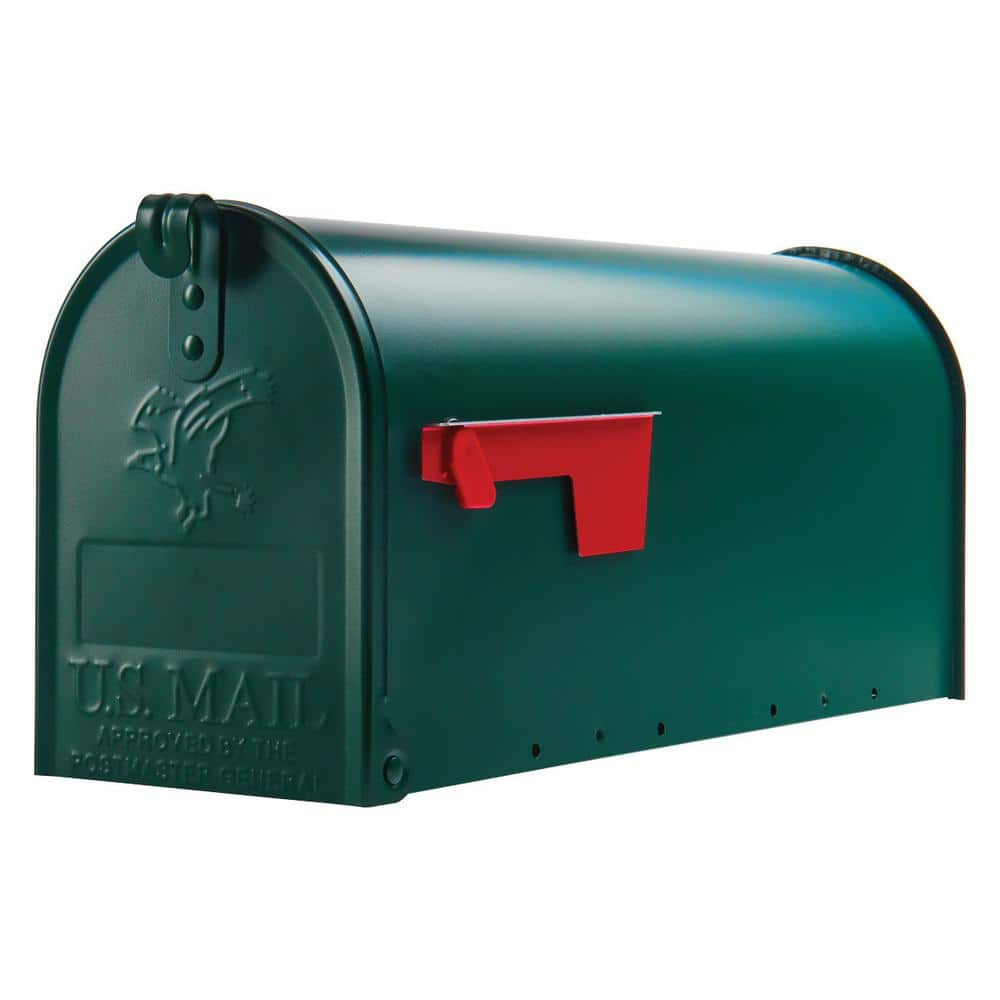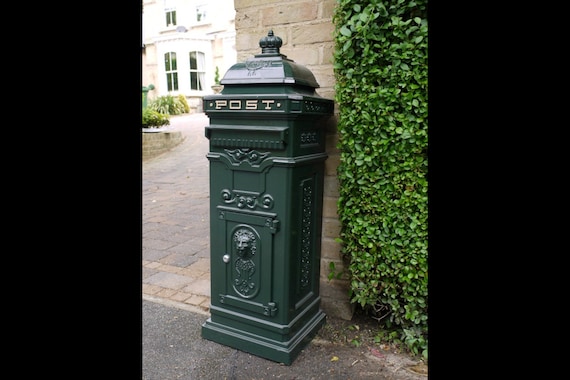By the mid-1800s adhesive postage stamps were widely used, and the Post Office Department recognized that people no longer needed to go to the post office to deposit their letters. Instead, they could keep stamps at home and mail letters at their leisure. So the department began to build and distribute mailboxes throughout U.S. cities.

The color of some Van Dorn letter boxes was another major problem. For a brief period, some boxes were painted bright red. These were frequently confused for similarly painted fire alarms and police call boxes. To overcome this, postal officials directed that boxes should generally be painted dark green. Box Tops - The Letter, The Box Tops - The letter, The Letter, Box Tops - The Letter, Joe Cocker - The Letter, The Box Tops - The Letter, B.B. King - The Letter, Queen Samantha - The Letter, Al.

Credit for patenting the first letter box officially sanctioned by the Post Office Department goes to a Philadelphia iron products manufacturer, named Albert Potts. His idea, which was patented on March 9, 1858, was to incorporate the letter box into either existing street side lamppost, or new lampposts to be provided by his firm. Pott's receptacles were small. As a result, they probably required frequent emptying. To eliminate the constant need for collections, a larger box was obviously required.
You may have noticed that a green relay box that was present on your corner, say, ten years ago may no longer be there. As the Internet further reduces the need for paper mail, carrier loads have. This video is about a1.
In 1860 a contract was awarded to John Murray for the production of 1,600 larger lamppost letter boxes. Like the Potts' boxes, these were literally incorporated into the lamp posts. No original examples of the Murray mailbox are known to have survived.
Green Screen Letterbox
The Orr & Painter iron manufacturers of Reading, Pennsylvania began manufacturing another style of mailbox in the early 1880s. Their cast iron boxes were designed to be hung anywhere, from telegraph poles to the sides of buildings.
During the same year as the Johnstown Flood, the Post Office Department ordered the production of a new style mailbox. Designed by Willard D. Doremus, three sizes of this style of box were produced. These boxes were not very strong and were easily shattered by thieves who made off with the mail. The lip over the letter slot often broke, letting in rain and snow.
By 1891 the U.S. Post Office Department had over 48,400 letter boxes of various types in use around the country. When postal officials accepted this style box, developed by Eugene D. Scheble, a dentist from Toledo, Ohio, the postal system encountered a great deal of trouble. Illegal deals were involved in the selection of the mailbox. Ultimately several prominent persons were indicted by a grand jury in 1903 on charges of conspiracy and fraud in connection with the letter box contracts, but not before more than 49,300 Scheble style boxes had been purchased. The Scheble mailbox was made of sheet metal, not iron.
The Van Dorn Iron Works of Cleveland, Ohio, was selected to make better boxes. Although Van Dorn boxes were known for their durability to weather, they were rather homely in appearance. Despite the fact that some models were 'spruced up' by the addition of fancier handles, they were generally so unattractive that in some cities local postmasters were requested, if not absolutely required, to remove them from boulevards, avenues, and streets where the letter boxes were out of harmony with the ornate electric lampposts then in use.
The color of some Van Dorn letter boxes was another major problem. For a brief period, some boxes were painted bright red. These were frequently confused for similarly painted fire alarms and police call boxes. To overcome this, postal officials directed that boxes should generally be painted dark green.
News File
- MARCH 2021 – WORLD BOOK DAY POST BOXESFive UK post boxes have been decorated to honour British authors and illustrators who’ve been using […]
- MARCH 2021 – MOTHERS’ DAY POST BOXESMothers are the latest group to be recognised and celebrate with specially decorated Royal Mail […]
- DECEMBER 2020 – DIGITAL CHRISTMAS POST BOXESFour post boxes, one located in each UK nation, have been made digitally active to mark Christmas […]
Brief history
Anthony Trollope, the novelist, introduced the pillar box to Britain in 1852 when he worked as a Post Office Surveyor in the Channel Islands. The first mainland box was erected a year later in 1853. At first local District Surveyors ordered boxes from local foundries. In 1859 a standard design was introduced. Wall boxes appeared in 1857, Ludlow boxes in 1885 and lamp boxes in 1896.
Each new reign brings boxes bearing the royal cipher of the monarch. Pillar boxes and wall boxes have been made in different sizes and with improvements to the design incorporated over time. A large number of different manufacturers have been employed and over the years there have been many experimental boxes put in service.
The Group

Founded in 1976, the LBSG has identified around 800 different types of postbox. There are more than 400 different varieties of pillar box; around 160 types of wall box, 66 Ludlow boxes and almost 80 versions of the lamp box. New boxes are still appearing while there are still many older boxes waiting to be discovered and rediscovered.
The Letter Box Study Group is the acknowledged authority on the history and development of the British roadside letter box.
Green Letter Box Is Used For In India

Membership
We are an active group of individuals devoted to the study of postboxes. From modest beginnings four decades ago the Letter Box Study Group has grown to become the recognised authority on the subject – all through the voluntary efforts of its members.
BOXING CLEVER
New school term? Need new ideas for learning-related outdoor activities in primary schools? In literacy, numeracy, art, design, geography and history? Try the Letter Box Study Group Education Pack on for size. It consists of worksheets and activities for EYFS (Early Years Foundation Stage), KS1 and KS2. There are also notes for extension activities.
The sheets can be used individually or as a whole. They can be deployed for simple colouring, observation exercises, reading and writing, numbers and basic reasoning. For older age groups, the Pack may be used to introduce discussion of design, engineering, manufacture and elementary business studies. Teaching children about history is an integral part of understanding the world today. The Pack is, for example, well suited to teaching about Victorian times.
Mccoy Green Letter Box
The Letter Box Study Group Education Pack will help children – and adults – look little more closely at post boxes, their place in our community landscape, and the importance of staying in touch with friends, family and neighbours all over the world.
